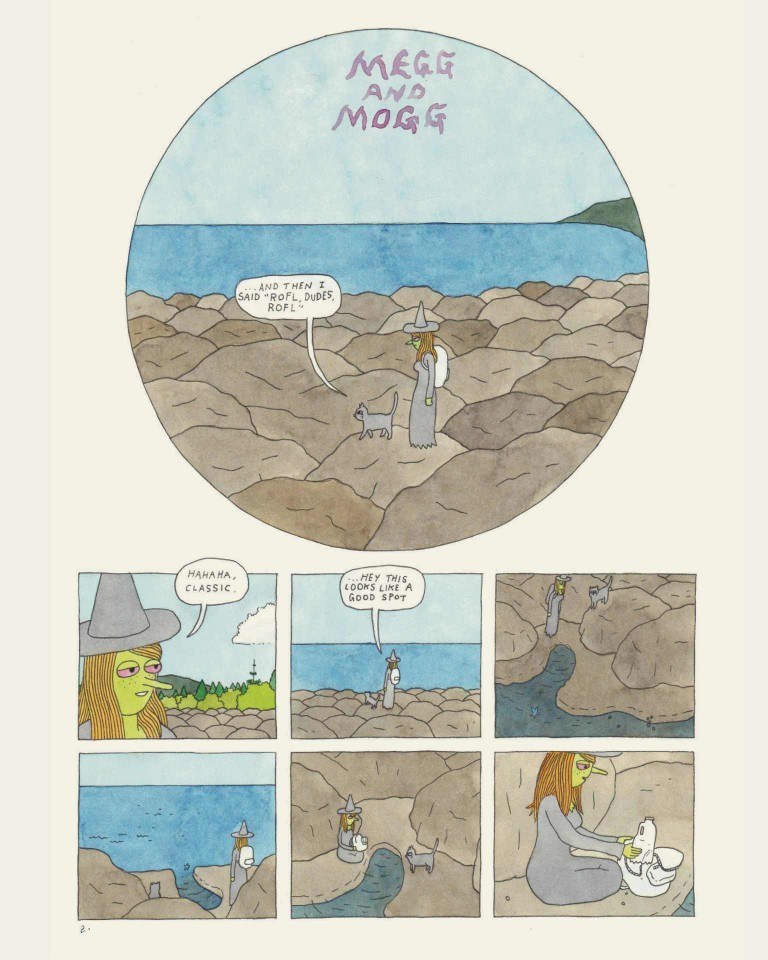
That's my problem with Megahax: taken in pieces, I absolutely love it. I want to print it out as a poster and hang it above my bed. I want to make it a patch and sew it on my favorite jacket. "I'm a fucking rich bitch," she says with a cigarette poised by her mouth. One of my favorites is a panel of Megg at a children's birthday party, black robes drawn up over hair legs as she sits on a pony. But some single panels are so fucking funny. At times I felt like it tried to be edgy just to be edgy, in the vein of Zap! comics. It's definitely supposed to make you squirm. The vulgarity made me uncomfortable-some drawn-out and graphic jokes about sexual assault, or even just images of the trio's filthy apartment. They are all terrible people who terrorize each other endlessly. Megahex is a collection of Simon Hanselman's Life Zone comics, which follow Megg, a witch, Mogg, her cat-lover, and Owl, their deadbeat roommate. It’s a new take on the Michael Corleone dilemma: every time they try to get out, something (inertia? laziness? fear?) keeps pulling them back in.I'm hesitant about recommending Megahex to people, because it's so weird that people will either really dig it or think I'm insane for suggesting it. As the story proceeds, this routine becomes less a liability and more the point of the book expressed over countless panels.


But there’s much more here than shock value Hanselmann’s repetitive grid mirrors the lack of progress in the story. (It’s no surprise that these strips run regularly in the sex and drugs-obsessed pages of Vice). On the other hand, he’d also be less likely to get away with drawing such graphic material under a more a realistic style, which is somewhat disturbing. This visual approach can soften the impact of the deviant events he depicts (vomiting, a cheese grater to the scrotum, cat-on-witch action, sexual assault among friends). Hanselmann fills his color palette with pinks, greens, whites and grays, and his style is fairly cartoony. It’s not just Megg’s depressive episodes, which are impressively bleak on their own, but the self-sabotaging behavior that all the characters participate in, revealing a deep, clear sadness behind the arching narrative. The small cast features Megg (a witch), Mogg (a cat/Megg’s lover) and Owl (a humanoid owl) the trio share a house where they spend most of their time smoking weed, watching TV and going on misadventures that start out comedic and slowly turn tragic.

Packaged like a DVD box set with an end-sheet inspired by John Everett Millais’ painting of Ophelia, Simon Hanselmann’s Megahex - a collection of his popular episodic comic - is much more ambitious than its stoner characters might initially suggest.


 0 kommentar(er)
0 kommentar(er)
